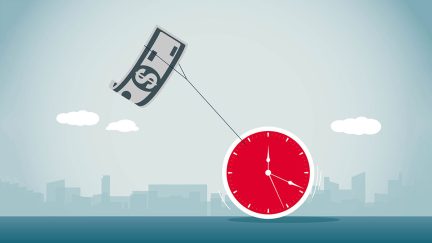Get more! Sign up for PLANSPONSOR newsletters.
Vanguard Report Underscores the Power of Automatic Enrollment
Over time, 90% of participants who are automatically enrolled in their retirement plan increase their deferral rates, either through automatic escalation or on their own.
While many industry experts have long believed that retirement plan participants who are automatically enrolled in their plan rarely give it another thought, a new report from Vanguard suggests otherwise.
In Vanguard’s “Automatic Enrollment: The Power of the Default,” the firm finds that over time, 90% of participants who are automatically enrolled in a plan increase their contributions, either automatically or on their own. In plans with automatic enrollment but no automatic increase, after three years, one-third of participants overrode their employer’s default and raised their deferral rates, and one-quarter overrode their employer’s rate, raised their deferral and signed up for automatic escalation.
Among plans with auto-enrollment and auto-escalation, after three years, about half of participants remained in the original plan design. Meanwhile, 17% of participants increased their contribution rate while retaining the increase feature and one-quarter increased their contributions but dropped the escalation. In total, while half remain in the original design, nine in 10 participants have contribution rates above the default design.
Among new hires, 91% who are automatically enrolled stay in the plan, compared with 28% of new hires who have to decide the join the plan. Vanguard also found that among all participants who are automatically enrolled, more than three-quarters remain invested in the default investment.
“Automatic enrollment is a pivotal strategy to improve retirement outcomes in DC [defined contribution] plans in the United States and around the world,” Vanguard says. “Plan sponsors can use the inertia inherent in participant retirement savings decisions to improve retirement outcomes in DC plans. Strategies include increasing minimum default deferral rates, including an automatic increase feature with a cap of at least 10%, and periodically ‘sweeping’ [i.e., re-enrolling] eligible nonparticipants into the default design.”
Vanguard studied 813,918 newly hired eligible employees in 520 plans and found that 70% of these plans pair auto-enrollment with auto-escalation. All of the plans used a balanced investment strategy as the default investment—with 99% using target-date funds (TDFs).
The default deferral rates were low, however. Two-thirds of the plans with auto-enrollment but no escalation defaulted participants at 4%. Nearly half with both auto-enrollment and auto-escalation defaulted participants at a 3% deferral rate or less. The plans’ annual escalation percentage is typically 1%, usually capped at 10%. However, one-quarter of plans have a higher cap, between 11% and 25%. Vanguard says the optimal amount, including company matches, should be between 12% and 15%.
Automatic enrollment raises participation most dramatically for younger participants, as they typically do not decide the join the plan on their own, Vanguard says. Among those younger than 25, 90% were participants under auto-enrollment, versus less than 2% for voluntary enrollment.
The higher take-up rate is also true for low-wage earners; employees earning less than $15,000 had a participation rate of 82% under auto-enrollment versus 4% under voluntary enrollment.
Regardless of whether the initial deferral rate is 2% or 6%, the participation rate among those earning $15,000 to $29,999 remains steady at 85%. This should be instructive for sponsors to consider higher initial deferral rates, Vanguard says.
“One criticism of automatic enrollment is that, because employers set deferral rates too low, participants who would have voluntarily enrolled at a higher level instead remain at a reduced contribution rate,” Vanguard says.


